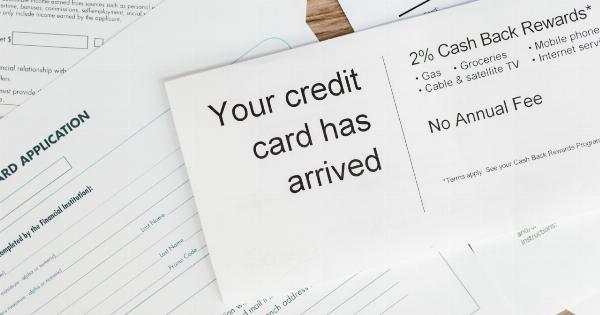A subscription is a service or arrangement in which a customer pays a recurring fee to access a product or service for a specific duration.
It has become increasingly popular in recent years, with many businesses adopting this model to provide ongoing value and convenience to their customers. From subscription boxes to streaming services, this business model has revolutionized the way we consume products and services.
Advantages of Subscriptions
There are several advantages to subscribing to a product or service:.
1. Convenience and Accessibility
One of the primary benefits of a subscription is the convenience it offers. Instead of making a one-time purchase, you can subscribe to a product or service and have it regularly delivered to your doorstep.
This saves you time and effort in going to a physical store or repeatedly placing orders online.
2. Cost Savings
Depending on the subscription, you can often save money compared to purchasing individual items or services separately. Many subscriptions offer discounted rates or bundles that provide more value for your money.
This can be particularly advantageous for products or services you regularly use or enjoy.
3. Personalized Experiences
Subscriptions allow businesses to tailor their offerings to the individual preferences and needs of their customers.
By understanding your preferences and usage patterns, companies can curate personalized selections or recommendations that enhance your experience. This customization creates a sense of exclusivity and keeps customers engaged.
4. Discovering New Products or Services
Subscriptions often introduce customers to new products or services they may not have discovered otherwise.
Whether it’s a subscription box filled with samples or a streaming service with a wide range of content, these subscriptions expose consumers to a variety of options they can explore and enjoy.
5. Flexibility and Scalability
Subscriptions offer flexibility in terms of durations and plans. Customers can choose monthly, quarterly, or annual subscriptions based on their preferences and budget.
Additionally, subscriptions can often be upgraded or downgraded depending on your changing needs, giving you the ability to scale your subscription as required.
The Subscription Economy
The rise of the subscription model has given birth to what is now known as the Subscription Economy.
This term refers to the collective impact subscriptions have had on various industries, forever changing the way businesses operate and customers consume products and services.
Industries Embracing Subscriptions
1. Streaming Services.
Streaming services like Netflix, Hulu, and Spotify have become synonymous with the subscription model. They provide unlimited access to a vast library of movies, TV shows, music, and podcasts for a monthly fee.
2. Subscription Boxes.
Subscription boxes have gained immense popularity in recent years. These boxes contain curated products within a specific niche, such as beauty, food, fitness, or even pet supplies.
Customers receive a new box each month, exposing them to a variety of products in their chosen category.
3. Software as a Service (SaaS).
Software companies, especially in the business realm, have started offering subscription plans for their products.
This allows customers to access cloud-based software and receive regular updates without the need for upfront investments in licenses or infrastructure.
4. Meal Kits.
Companies like Blue Apron and HelloFresh offer meal kit subscriptions that provide pre-portioned ingredients and recipes delivered to your doorstep.
This has revolutionized the way people cook at home, making it convenient and accessible for even the busiest individuals.
5. E-commerce Subscriptions.
Many e-commerce businesses now offer subscriptions for customers who frequently purchase their products. This allows customers to set up recurring orders for items they regularly consume or need, ensuring they never run out of essential supplies.
The Future of Subscriptions
The subscription model continues to evolve and expand into new industries, signaling its long-term viability and potential. Here are a few trends that indicate the future of subscriptions:.
1. Subscription Aggregation
As more subscriptions populate the market, customers are faced with the challenge of managing multiple subscriptions.
To address this issue, subscription aggregators have emerged, offering platforms that consolidate subscriptions into a single dashboard. This simplifies management and provides customers with a comprehensive view of their subscriptions.
2. Customization and Personalization
Businesses are investing in technologies and data analytics to further personalize subscriptions. By leveraging customer data and preferences, companies can enhance the value they provide by tailoring offerings to individual tastes and needs.
3. Industry Cross-Pollination
Industries that have traditionally relied on one-time purchases are increasingly exploring the subscription model.
For example, automobile manufacturers are experimenting with subscription-based car ownership, allowing customers to access different vehicles based on their current needs.
4. Sustainable Subscriptions
While the subscription model offers convenience and cost savings, concerns about sustainability have arisen.
To address this, businesses are adopting eco-friendly packaging, recycling programs, and carbon offset initiatives to make subscriptions more environmentally friendly.
The Value of Subscriptions
Subscriptions have transformed the way we engage with products and services, offering greater convenience, cost savings, and personalized experiences.
Their rise has also given businesses new opportunities to build long-lasting relationships with their customers and generate recurring revenue.
As the Subscription Economy continues to grow and evolve, it is important for both businesses and consumers to consider the advantages and potential drawbacks of subscriptions to make informed decisions.






























